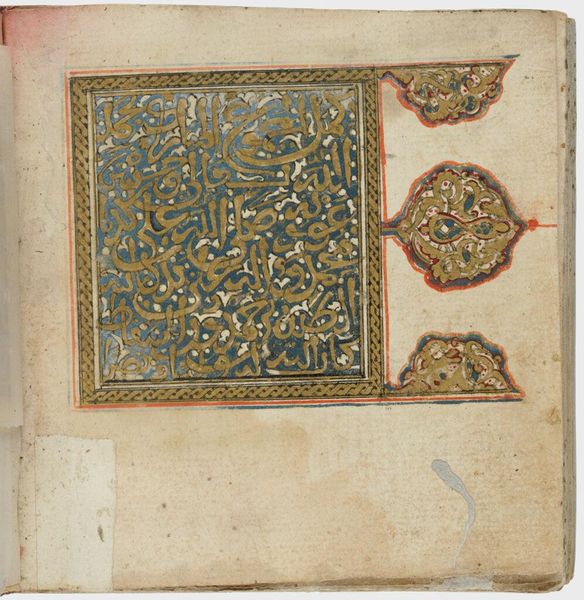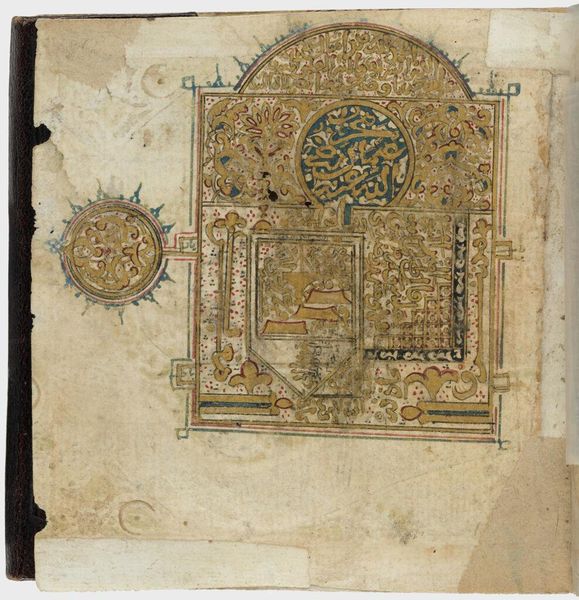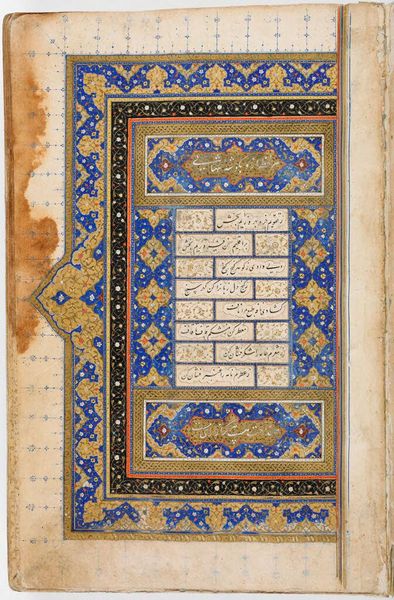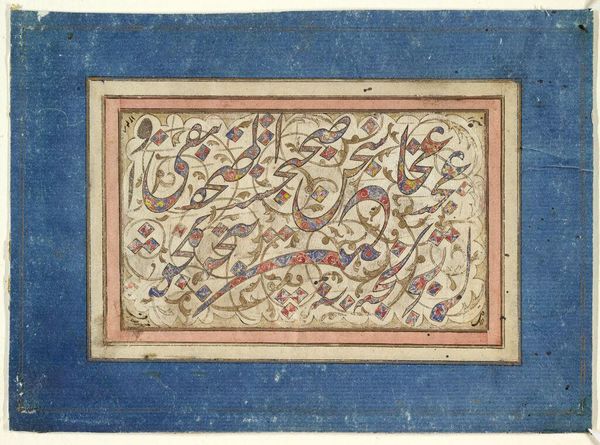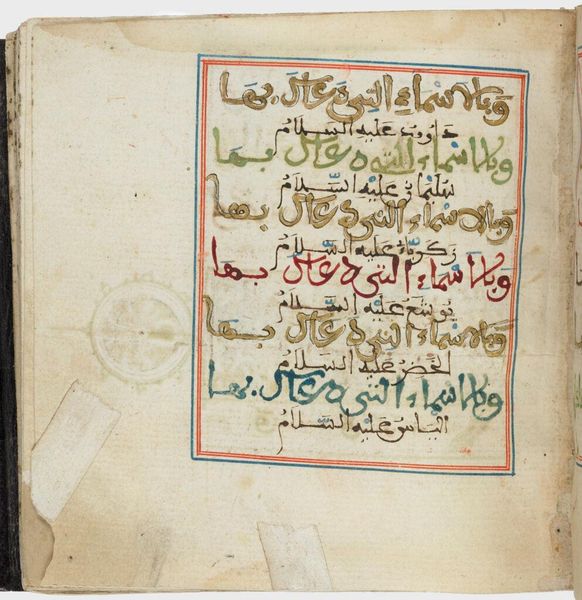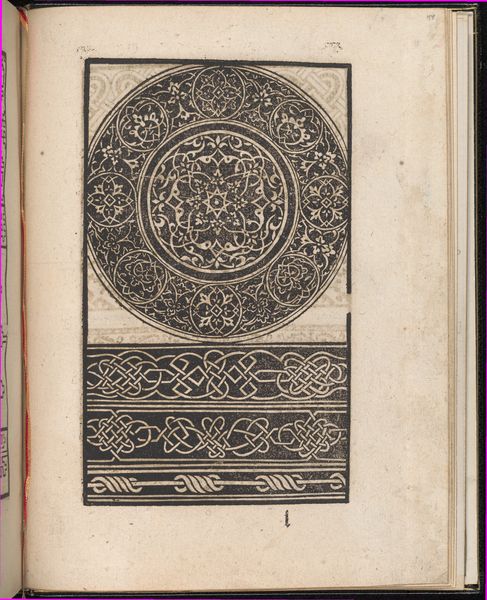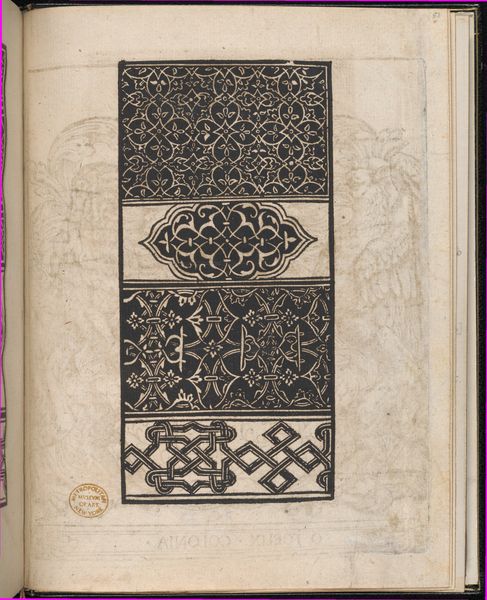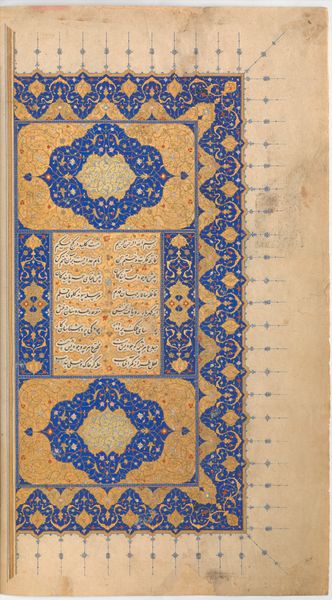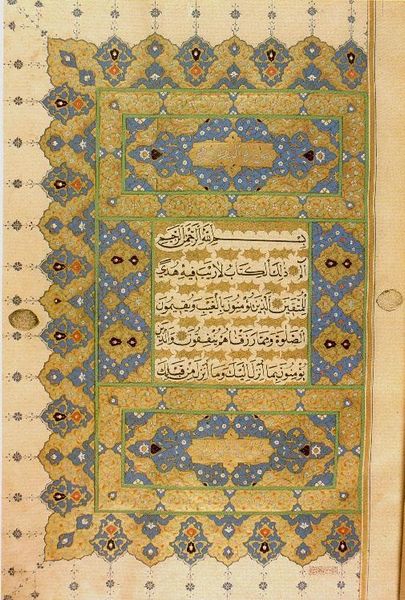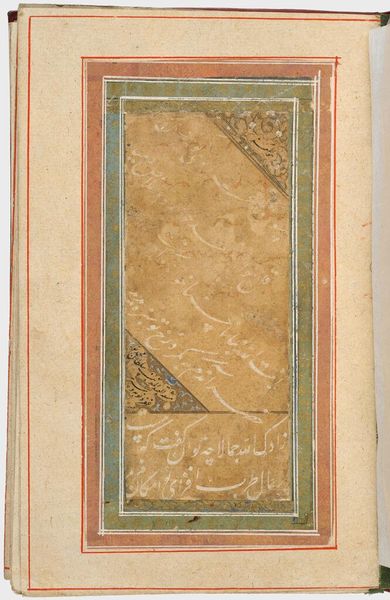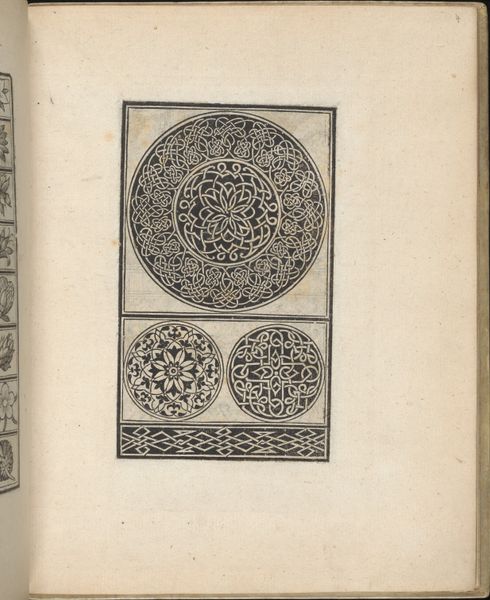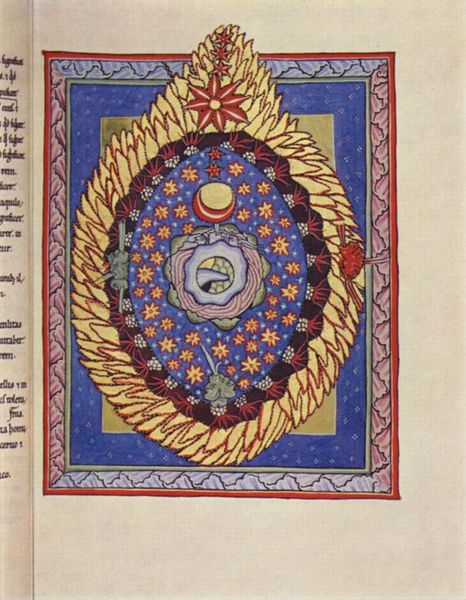
Graves (verso), folio 23 from a Manuscript of Dalaâil al-Khayrat by Jazuli c. 16th century
0:00
0:00
Dimensions: 12.86 x 12.86 cm (5 1/16 x 5 1/16 in.)
Copyright: CC0 1.0
Curator: The intricacy is astonishing! It feels almost like a woven tapestry of words. Editor: Indeed. This is folio 23 from Jazuli’s Dala'il al-Khayrat, often called "Graves (verso)," housed here at the Harvard Art Museums. These pages functioned as devotional aids. Curator: What strikes me is how these manuscripts move beyond merely religious texts; they become objects of veneration themselves. How accessible were these prayer books to ordinary people? Editor: The production of such illuminated manuscripts involved considerable resources. They were often commissioned for elite religious or political figures, signifying power and prestige as much as piety. Access would have been limited. Curator: Yet, its influence permeated society. The visual language, with its elegant script and ornate borders, shaped the broader cultural aesthetic. Editor: Exactly. Consider the politics embedded within the illumination: who gets to depict devotion, and whose voices are amplified through such displays of artistry? Curator: So true. It encourages a deeper questioning about how power and art intersect. Editor: Absolutely. It's a potent reminder that even the most beautiful objects can carry complex social narratives.
Comments
No comments
Be the first to comment and join the conversation on the ultimate creative platform.
